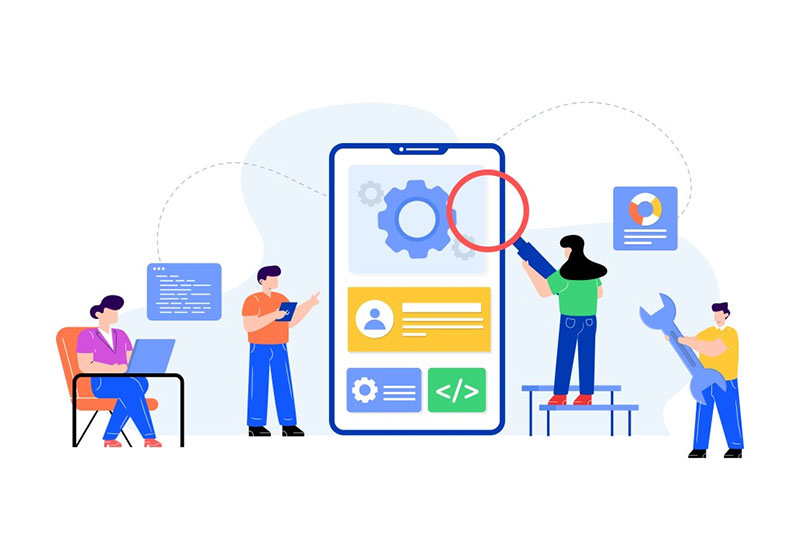14 Microlearning Best Practices For Effective Skill Development

With every passing day, the spirit of competition all around us in the world is getting more and more fierce. Whoever has the sharpest skills will likely grab the best opportunity at study, work, and other fields. Hence, learning efficiently and effectively becomes paramount. That’s where microlearning joins the game. It is like serving up a bite-sized snack of the education world – small and easy to digest. Let’s see what microlearning exactly is with some strategies to change the skill development game.
What Exactly Is Microlearning?
Before diving into the best practices, let’s get on the same page about microlearning. It’s like learning on the go, one small chunk at a time. Think of it as those quick YouTube tutorials that teach you how to tie a bowtie or write an error-free Python program.
Now, let’s get into the crux and talk about some microlearning strategies you can use to make skill development more effective.
1. Keep it Short and Sweet
Your learning content should be a snack, not a full-course meal. Microlearning is like offering bite-sized nuggets of knowledge instead of a full buffet. So, keep your content short and sweet. Short and focused lessons are easier to absorb and retain. By keeping your content short and straightforward, you ensure your learners memorize whatever you’re feeding them.
2. Identify Specific Learning Objectives
Before diving into microlearning, clearly define what skills or knowledge you want your team to acquire. For example, if you are in the tech industry, you might want your employees to master a new programming language. This clear objective guides the creation of microlearning content.
3. Use Varied Media
Do not just stick to a single media type. Always try leveraging different types of microlearning content. You can include videos, infographics, quizzes, and interactive scenarios. Variety keeps things exciting and accommodates different learning styles.
4. Make It Accessible
Ensure that your microlearning content is easily accessible to your employees. It is like placing snacks in a pantry where everyone can grab them. Use a learning management system (LMS) or a user-friendly platform to make the content available on demand.
5. Consistency Is Key
Always maintain a regular schedule for delivering your microlearning content. This helps you maintain a routine of skill development with your learners. Furthermore, consistency is the most significant element that keeps your employees engaged with your brand. So, if you don’t want to lose your user base, ensuring consistent content delivery is the key.
6. Foster Peer Learning
Do not just create and deliver content to your learners. You can also encourage them to join discussions and encourage peer learning. Create discussion forums or platforms where your employees can ask questions and learn from each other. It is like having a mentorship program but on a broader scale. Being at the receiving end of the knowledge would also give you plenty of opportunities to learn something new to improve your stuff.
7. Feedback Loop
Implement a feedback mechanism that allows learners to provide input and rate the microlearning content. Feedback acts like a compass, helping you steer your microlearning strategies in the right direction. Without feedback, you won’t identify the bottlenecks in your microlearning and content and won’t be able to make improvements to offer a better experience to your learners.
8. Mobile-Friendly Design
Think mobile-first. Make sure your microlearning content is compatible with smartphones and tablets. This allows you to offer a portable learning library your learners can access anytime, anywhere, on the go.
9. Gamify The Experience
Turn learning into a game. Create quizzes, challenges, or simulations that engage learners and motivate them to complete microlearning modules. This turns the skill development into a fun adventure. Gamifying your microlearning lets you reward your learners for the milestones they achieve. These rewards encourage learners to engage more with the content to keep collecting the rewards so they can use them for their benefit.
10. Personalize Learning Paths
Not all learners have the same learning needs. Hence, you need to create personalized learning paths based on individual skill gaps and career goals. It is akin to offering a tailor-made suit – it fits perfectly for each learner. Personalization is the key to providing learners with the content they need. And giving them what they really need is always the best way to delight your users.
11. Monitor Your Progress
You cannot go with a set-and-forget formula if you want to thrive. To scale with speed, you need to monitor your progress to determine the scope of improvements. Track your data using analytical tools to measure the effectiveness of your microlearning initiatives. See if your learners are reaching their skill development goals and check on the points or elements that are attracting or bothering your learners. Keeping an eye on data will feed you with insights you can use to make wise and growth-oriented decisions.
12. Collaborate With Experts
Partner with subject matter experts within your organization or industry. They can create microlearning content that reflects the latest trends and best practices. With experts on your platform, you also increase the chances of connecting with their employees, resulting in more eyeballs to your content. And the more eyeballs you get, the more deals you can close.
13. Keep It Engaging
Engaging content is like a magnet. Use storytelling, case studies, and real-world examples to captivate your learner’s attention. Always keep in mind that you cannot make microlearning boring. If you cannot engage learners, they will start looking forward to your competitors. So make sure the learning module is something your learners look forward to, not a chore.
14. Link To Real-Life Application
Ensure each microlearning module relates directly to real-life tasks or challenges your learners face. This is similar to teaching someone how to drive a car by offering them the driving seat instead of a book with driving instructions.
Parting Thoughts
Microlearning has the potential to boost your skill development game and make it more effective. But it requires spot-on strategies to make that happen. And the ones shared above are a few you can rely on to ensure you are upskilling your community. So practice these microlearning strategies to soar your learners’ skills.
- Mastering JavaScript Events for Dynamic Web Apps - May 15, 2024
- 8 Ways Technology Is Changing Business - May 15, 2024
- Web Design Revolution: Leading Web Component Libraries - May 15, 2024








